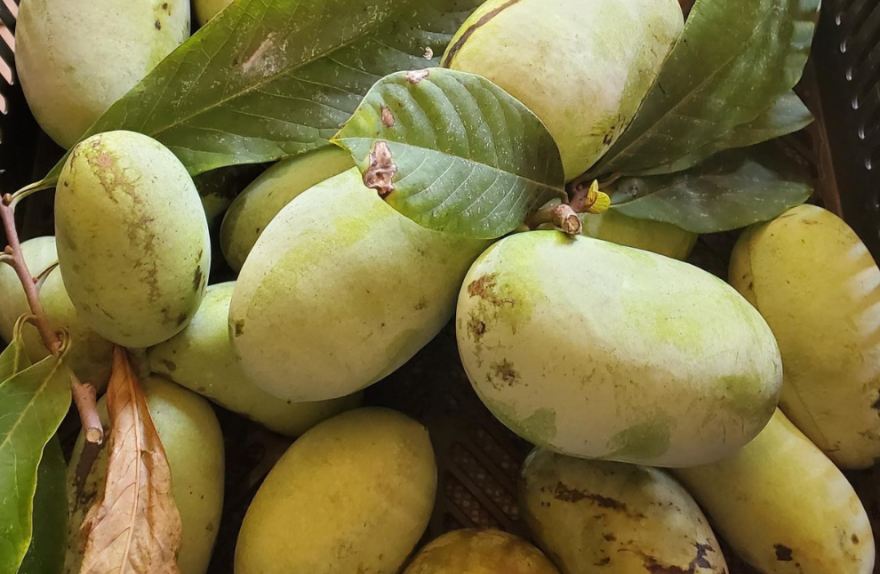It’s October, and that means Michigan’s largest native fruit is ripe and ready. You’re probably thinking of a big juicy apple, but apples aren’t native to Michigan. Michigan’s largest native fruit is the pawpaw.
Like many school children, Cheryl Bartz, from IPR’s Red Pine Radio group, first heard the song in elementary school. Here’s one version on this old Smithsonian Folkways Recording, Paw Paw Patch.
She wondered, “What’s a pawpaw? What does it look like?” This month she went to a nursery in Owosso to learn more.
At Nash Nurseries in Owosso, they grow a number of varieties of pawpaw that look like small, green, smooth-skinned potatoes. Inside, the fruit is yellow and contains 8 to 10 seeds about the size of an almond. They have the consistency of custard and can be scooped from the skin with a spoon when ripe.

Some people say they taste like a combination of pineapple, mango and banana. Bill Nash says the fruit was George Washington’s favorite dessert.
“Thomas Jefferson grew them at Monticello,” says Bill. “Lewis and Clark ate them on their trip back and forth across the country…. So the old saying ‘as American as apple pie' ... should be ‘as American as pawpaw pie.' And pawpaw pie actually is very good.”

But despite its storied history, many Michiganders have never heard of, let alone tasted, this delicious fruit. Bill’s granddaughter Lexi explained why that is.
“They’re squishy like a banana,” she said.
Because they’re squishy, they can’t be shipped when ripe. And once a pawpaw is picked, it ripens in just a few days. That’s why you can usually only find pawpaws at the farm where they’re grown. Or you can sometimes find frozen pawpaw puree online.
Bill Nash says the future of pawpaw farming lies in perfecting the process of separating the fruit from the seeds and skins and then freezing the pulp. He’s working with Michigan State University to help make that process commercially viable.
The trees grow wild in Michigan below Clare. And they can be cultivated farther north in the fruit belt, Nash says. You can plant them in your yard to enjoy the fruit and to help wildlife. The fruit is eaten by many species and it’s the only host for the zebra swallowtail butterfly.
The warming climate will make northern Michigan increasingly favorable for pawpaws.

